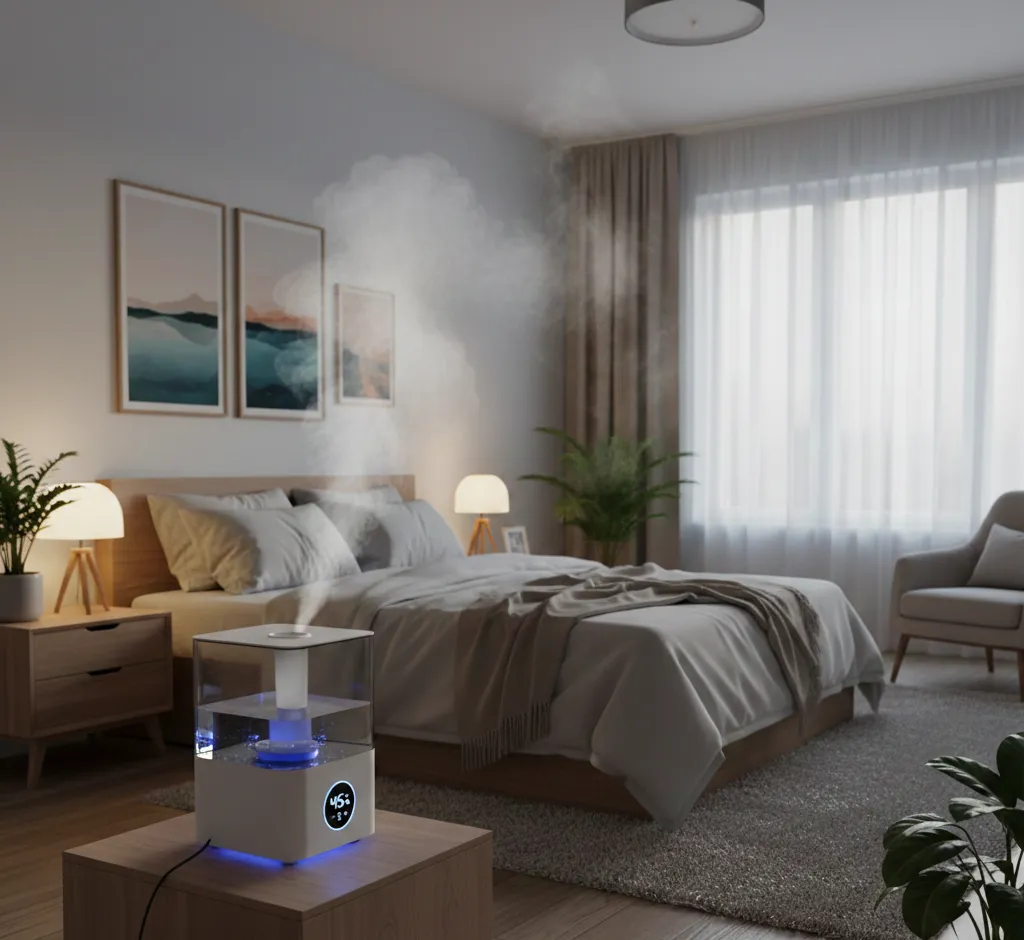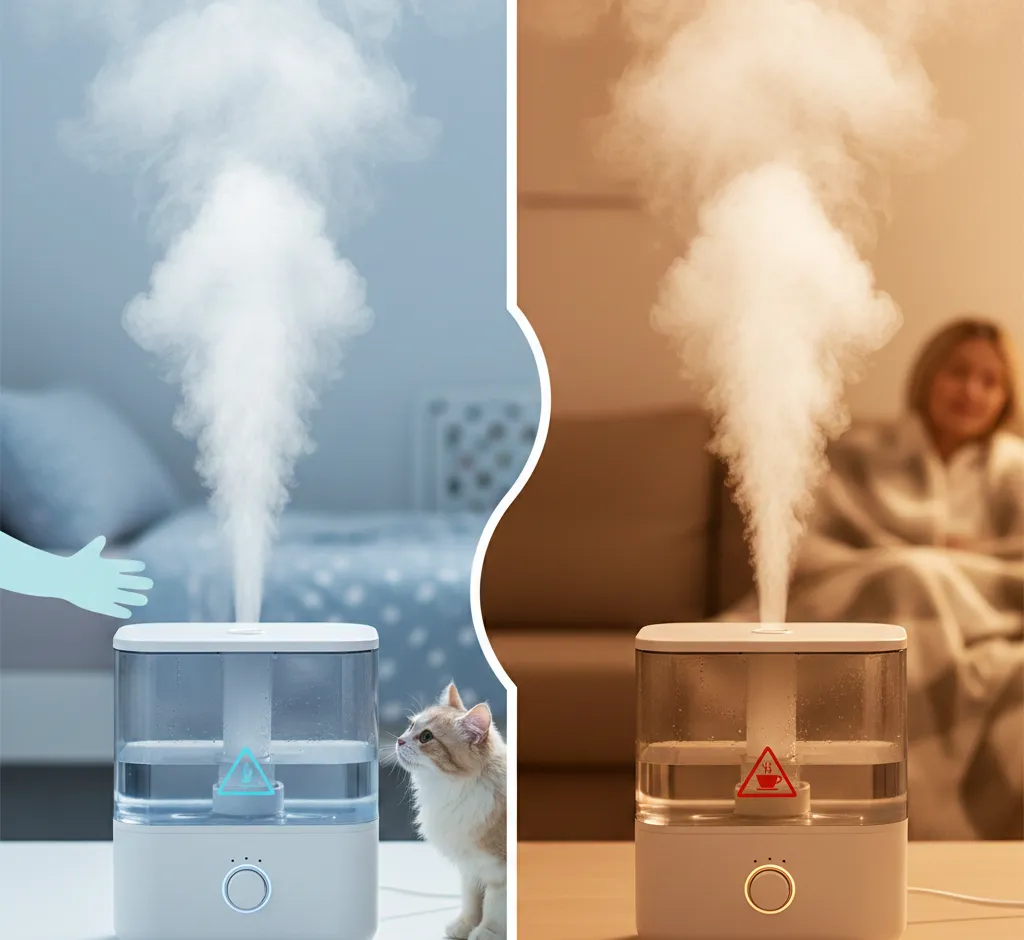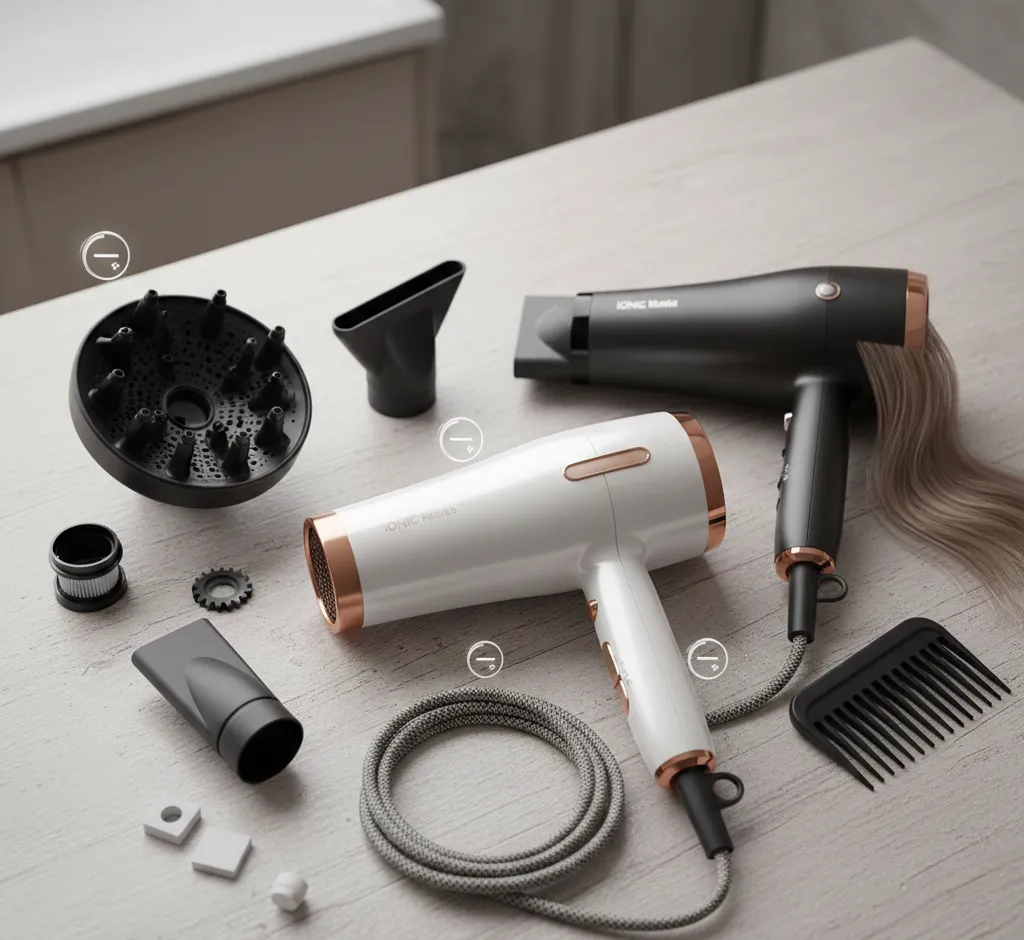The Essential Guide to Choosing the Right Size Humidifier for Your Bedroom: From Square Footage to Sleep Quality
Unlock the secrets to a perfect night's sleep by choosing the right humidifier size for your bedroom. Learn to calculate square footage, understand GPD output, and factor in room-specific variables like ceiling height and home tightness for optimal humidity.

The Essential Guide to Choosing the Right Size Humidifier for Your Bedroom
For many, the bedroom is a sanctuary—a place of rest, rejuvenation, and escape. Yet, an often-overlooked factor can silently sabotage your sleep quality, comfort, and even your long-term health: **indoor air humidity**. Especially during colder months when heating systems strip the air of moisture, relative humidity levels can plummet below the ideal 40–60% range, leading to dry skin, irritated sinuses, static electricity, and a higher susceptibility to airborne viruses.
The solution is simple: a humidifier. However, choosing the right model is not as simple as picking the cheapest or the one with the biggest tank. The single most crucial factor for effectiveness, efficiency, and safety is **sizing**. An undersized humidifier will run constantly, fail to reach the target humidity, and waste energy. An oversized one, conversely, can lead to over-humidification, resulting in condensation on windows, potential mold and mildew growth, and damage to wooden furniture or building materials.
This comprehensive guide will walk you through the essential steps and considerations for selecting the perfect-sized humidifier to transform your bedroom into a comfortable, optimally-humidified haven.
Step 1: Calculate Your Bedroom's Square Footage (Sq. Ft.)
The first and most critical step is to accurately measure the space you need to humidify. Humidifier packaging almost always specifies the maximum square footage the unit is designed to cover.
How to Measure Your Room
- Measure the Length: Use a tape measure to find the longest wall's length in feet.
- Measure the Width: Measure the width of the adjacent wall in feet.
- Calculate Square Footage: Multiply the length by the width ($L \times W$). For example, a room that is 12 feet long and 15 feet wide is 180 sq. ft. ($12 imes 15 = 180$).
| Room Size Category | Approximate Square Footage | Tank Capacity Recommendation (Rough Estimate) |
|---|---|---|
| Small Room/Personal | Under 300 sq. ft. | 0.5 to 1.5 Gallons |
| Medium Room/Standard Bedroom | 300 to 500 sq. ft. | 1.5 to 3 Gallons |
| Large Bedroom/Master Suite | 500 to 800 sq. ft. | 3 to 6 Gallons (or higher output) |
Pro Tip: Always round up. If your bedroom is 280 sq. ft., look for a humidifier rated for 300 sq. ft. or more. It is better to have a unit that can run at a lower, quieter setting while still keeping up, than one that must run at maximum output constantly.
Step 2: Understanding Capacity vs. Output (Gallons Per Day)
When shopping, you will encounter two different metrics, which are often confused:
- Tank Capacity: This is the total amount of water the reservoir can hold (e.g., 1 gallon, 6 liters). This primarily dictates **runtime**—how long the unit can operate before needing a refill. A larger tank is more convenient, especially for night-long use.
- Moisture Output: This is the amount of water the unit releases into the air over a 24-hour period, often measured in Gallons Per Day (GPD) or liters per hour (L/h). This is the true measure of the unit's **power** and its ability to raise the humidity level.
For a standard bedroom, you want a unit that can run for at least 8 to 10 hours on a medium setting without needing a refill. This often means a tank capacity of **1.5 to 2 gallons** for a medium-sized bedroom (300-500 sq. ft.). Focus more on the manufacturer's **recommended square footage** than just the tank size, as it already incorporates the moisture output.
Step 3: Factor in Room-Specific Variables for a 'Sizing Boost'
Simply matching the square footage might not be enough. Several factors unique to your bedroom can increase the actual demand for moisture, effectively requiring you to size up.
Key Environmental and Structural Factors
1. Ceiling Height
Humidifiers are typically sized assuming standard 8-foot ceilings. If your bedroom has high or vaulted ceilings (9 feet or more), the volume of air is significantly greater, and the standard square footage rating will be insufficient. In this case, consider a model rated for the next size category up.
2. Home Tightness and Insulation (Air Changes Per Hour - ACH)
An older home with drafty windows, thin insulation, and a chimney will lose moisture much faster than a modern, tightly-sealed, energy-efficient home. This is often quantified by **Air Changes Per Hour (ACH)**. If your home is 'loose' (old, drafty), you will need a more powerful humidifier to continuously replace the escaping moisture. **Sizing up by 25-40%** may be necessary for very drafty spaces.
3. Dry Climate and Heating Source
If you live in a perpetually dry climate (like the desert Southwest) or use extremely dry-heat sources (like a wood stove or certain forced-air systems), the ambient air entering your room will be much drier. This dramatically increases the workload on your humidifier, warranting a bump in size.
4. Placement and Obstruction
A humidifier placed in a corner, under a shelf, or blocked by curtains will not distribute mist efficiently. While not a sizing issue, poor placement can make even a correctly-sized unit perform like an undersized one. Position the unit in an open area, ideally 3-5 feet off the ground and away from walls.
Step 4: Choosing the Right Humidifier Type for the Bedroom
The type of humidifier you choose will also impact how you assess its suitability, particularly regarding noise and mist type—critical factors for a sleeping environment.
Types of Humidifiers for Bedroom Use
1. Ultrasonic Humidifiers
These are arguably the most popular choice for bedrooms. They use high-frequency sound waves (ultrasonic vibrations) to break water into a fine, cool mist. Their primary advantage is their **whisper-quiet operation** (often 30 dB or less), making them ideal for light sleepers and nurseries.
- Pros: Extremely quiet, energy-efficient, produces a visible mist.
- Cons: Risk of 'white dust' (mineral deposits from hard water) being dispersed into the air. Requires diligent cleaning.
2. Evaporative Humidifiers (Cool Mist)
These use a fan to blow air across a wet wick or filter. They are naturally self-regulating, meaning the evaporation rate slows as the air becomes more saturated, making it difficult to over-humidify. The mist they produce is invisible vapor.
- Pros: Self-regulating, no white dust, less prone to mold/bacteria dispersal (as water evaporates, not sprayed).
- Cons: **Noisier** due to the internal fan, requires filter replacement, and the fan noise can be disruptive in a quiet bedroom.
3. Warm Mist Humidifiers (Vaporizers)
These units use a heating element to boil water, releasing clean, warm steam. The boiling process kills waterborne pathogens, providing a hygienic mist. The warmth can be soothing for cold or flu symptoms.
- Pros: Hygienic (steam is sterile), no white dust, can feel comforting in winter.
- Cons: **Burn hazard** (hot water/steam), slightly higher energy consumption, the boiling sound can be noticeable, and they may be less suitable for children's bedrooms.
Recommendation: For most bedrooms, a high-quality, quiet **Ultrasonic** model is the preferred choice, provided you use distilled water to mitigate the white dust issue and clean it regularly. If you absolutely cannot tolerate fan noise, ultrasonic is the way to go.
Step 5: Essential Features to Ensure Optimal Sizing and Performance
The right size unit is only effective if it has the controls necessary to manage your room's humidity.
1. The Built-in Hygrometer (Humidistat)
A non-negotiable feature for any bedroom humidifier is a built-in hygrometer, or **humidistat**. This is the humidity equivalent of a thermostat. You set your desired relative humidity (e.g., 45%), and the unit will automatically turn on or off, or adjust its output, to maintain that level. This prevents the dangers of over-humidification and ensures the unit only runs when necessary, conserving power and water.
2. Automatic Shut-Off
Two shut-off features are critical for bedroom use:
- Tank Empty Shut-Off: Stops the unit when the water runs out, protecting the heating element (in warm mist models) or the internal components.
- Target Humidity Shut-Off: Works with the humidistat to turn the unit off when the set humidity level is reached.
3. Night Mode and Dimmable Displays
Since the unit will be running while you sleep, look for models with dimmable or completely turn-off displays and LED lights. Some units offer a dedicated 'sleep' or 'night' mode that lowers the mist output and minimizes light/noise.
4. Ease of Refill and Cleaning
A larger capacity means less frequent refills, but the refill process itself must be easy—especially when half-asleep. Top-fill designs are significantly more convenient than models that require flipping the tank upside down. Furthermore, cleaning is vital for preventing the growth of mold, mildew, and bacteria; look for models with wide tank openings and few hard-to-reach crevices.
Summary: The Right Sizing Equation
Choosing the correct size humidifier for your bedroom boils down to a simple, prioritized process:
- Measure the Square Footage: Determine your room's basic size (e.g., 450 sq. ft.).
- Match the Humidifier Rating: Select a unit rated for that size or slightly larger (e.g., a 500 sq. ft. model).
- Consider Environmental Factors: If your home is drafty, has high ceilings, or is in a very dry climate, **size up** to the next category (e.g., go from a medium to a large room model).
- Prioritize Bedroom Features: Select a type (likely Ultrasonic) that is quiet and includes a **humidistat** and automatic shut-off features.
By diligently following these steps, you move beyond guesswork and ensure that your new humidifier is perfectly equipped to maintain the ideal humidity level in your personal space. The result will be a noticeable improvement in your physical comfort, better sleep, and a healthier indoor environment, making your investment truly worthwhile.
Don't let dry air compromise your health or your rest. The right-sized humidifier is the final, essential piece of the puzzle for a perfect bedroom sanctuary.


